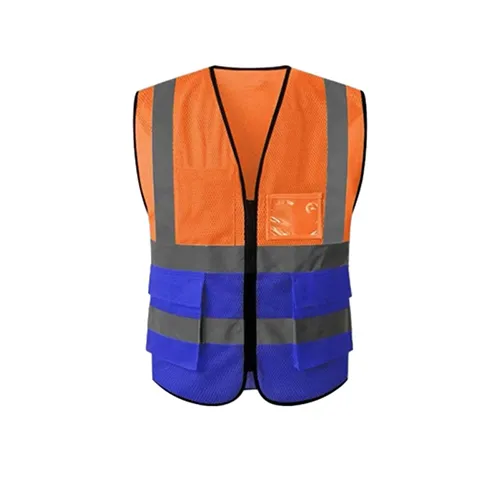- Afrikaans
- Albanian
- Arabic
- Armenian
- Basque
- Belarusian
- Bengali
- Bulgarian
- Croatian
- Czech
- Danish
- Dutch
- English
- Esperanto
- Finnish
- French
- German
- Greek
- Hebrew
- Hindi
- Indonesian
- irish
- Italian
- Japanese
- Javanese
- kazakh
- Rwandese
- Korean
- Kyrgyz
- Latin
- Latvian
- Luxembourgish
- Malay
- Myanmar
- Nepali
- Persian
- Polish
- Portuguese
- Romanian
- Russian
- Serbian
- Slovak
- Spanish
- Swedish
- Tagalog
- Tajik
- Turkish
- Ukrainian
- Uzbek
- Vietnamese
Nov . 28, 2024 05:29 Back to list
Durable Gloves Designed to Resist Cuts and Punctures for Enhanced Hand Protection
Puncture and Cut Resistant Gloves Essential Safety Gear in the Workplace
In many industries, safety is not merely an option; it's a fundamental requirement. Among the various protective gear available, puncture and cut resistant gloves have emerged as critical tools in safeguarding the hands of workers who face potential hazards on the job. From construction sites to food processing plants and medical environments, these specialized gloves play a vital role in minimizing injury risks and ensuring the well-being of employees.
Understanding Puncture and Cut Resistance
Puncture and cut resistant gloves are designed to provide a high level of protection against sharp objects that could cause injuries. The primary focus of these gloves is their ability to withstand various types of cuts and punctures that can occur in different work settings. The materials used in the production of these gloves often include high-performance fibers such as Kevlar, Dyneema, and high-density polyethylene (HDPE). These materials are engineered to provide exceptional strength and durability while retaining flexibility and comfort for the wearer.
The level of cut resistance is measured using the EN 388 standard, which evaluates the performance of protective gloves against various mechanical risks. The scale ranges from A (the lowest protection) to F (the highest). The puncture resistance is also assessed, indicating how much force is needed to penetrate the glove material with a sharp object. Understanding these ratings helps employers choose the appropriate level of protection based on the hazards present in their workplace.
Applications and Industries
The applications for puncture and cut resistant gloves are vast and varied. In construction, workers are constantly handling sharp tools and materials, making these gloves essential for preventing accidental cuts and lacerations. Similarly, in the manufacturing and assembly industries, employees often work with sharp components and machinery, which necessitates the use of protective gloves to avoid potential injuries.
In the food processing industry, where safety and hygiene are paramount, cut resistant gloves are essential for employees handling knives and other sharp tools
. These gloves not only protect against cuts but also provide a level of dexterity that allows workers to handle food safely and efficiently. Additionally, in the medical field, puncture and cut resistant gloves serve as a barrier against sharp instruments, ensuring the safety of healthcare professionals as they perform their duties.puncture and cut resistant gloves

Comfort and Usability
While protection is critical, the comfort and usability of puncture and cut resistant gloves should not be overlooked. Workers who wear uncomfortable gloves may be less efficient, impacting overall productivity. Therefore, manufacturers are increasingly focusing on creating gloves that provide a perfect balance between protection and comfort. Features such as breathable materials, ergonomic designs, and touchscreen compatibility are becoming more common.
Moreover, many gloves are now designed with textured surfaces to enhance grip, enabling workers to handle objects safely and with precision. As various industries continue to seek innovative solutions for workplace safety, the evolution of glove technology is likely to improve further, addressing the specific needs of different sectors.
Training and Best Practices
Even with the most advanced protective gear, proper training and adherence to safety protocols are essential for ensuring maximum protection. Employers should train their staff on the correct use of puncture and cut resistant gloves, emphasizing the importance of selecting the appropriate glove for specific tasks. Regular inspections of gloves should also be conducted to identify signs of wear and tear, as compromised gloves can lead to injuries.
In addition to providing the right protective equipment, fostering a culture of safety within the workplace is crucial. Encouraging open communication about hazards and safety measures can empower workers to take responsibility for their own safety and the safety of their colleagues.
Conclusion
Puncture and cut resistant gloves are indispensable in many workplace environments, combining the necessary protection with comfort and usability. As industries continue to evolve and face new challenges, the demand for high-quality protective gear will remain significant. Prioritizing safety through the use of these specialized gloves not only protects workers from injuries but also enhances overall productivity and morale, ultimately benefiting both employees and employers alike. Investing in the right safety equipment today paves the way for a safer, more efficient tomorrow.
-
Work Reflective Vest: A Silent Guardian of Security
NewsJul.10,2025
-
Vest Reflective Safety: A Safety Lighthouse in Low Light and High Traffic Environments
NewsJul.10,2025
-
Soft Cotton Polo Shirts: A Fashionable and Practical Choice for Multiple Scenarios
NewsJul.10,2025
-
Soft Cotton Polo Shirts: A Fashionable and Practical Choice for Multiple Fields
NewsJul.10,2025
-
Reflective Vest: The Light of Industry and Outdoor Safety Protection
NewsJul.10,2025
-
Polo Shirt: A versatile and fashionable item that can be worn in one outfit
NewsJul.10,2025




